Occupational Safety Training for the Hotel Industry
99,000 ₫
Note: The above price is calculated for one person. Prices may vary depending on the number of trainees participating in the course and market fluctuations. For more accurate pricing support, please refer to the pricing table or contact our consulting staff directly.
The Hotel Industry Occupational Safety Training course is a training program that provides Group 3 occupational safety knowledge. The course will raise awareness of accident prevention during the work process for trainees. Accordingly, the occupational safety training content is aligned with Article 18 Decree 44/2016/ND-CP.
Table of Contents
Toggle1. Overview of the Hotel Industry
a. What is the Hotel Industry?
The hotel industry is an industry operating in the field of providing accommodation and care services for tourists. Businesses in the hotel industry provide services such as lodging, dining, room service, amenities, and other services to meet customer needs during travel or business trips. This industry includes various types of hotels, ranging from small hotels with a few rooms to luxury resorts and large multinational hotels.
Hotel businesses may also provide conference and event services, entertainment services such as theaters, casinos, gyms, and other facilities to create a comprehensive experience for customers. The hotel industry is closely linked to the tourism industry and is an important part of the economy of many countries, contributing to revenue and creating jobs for many people.

b. Tools and Equipment Used in Hotels
In the hotel industry, there are many types of tools and equipment used to serve activities and customer services. Below are some common tools and equipment in hotels:
- Computers and management software: Used to manage the booking system, customer information, invoices, and other activities.
- Online booking and reservation management systems: Provide customers the ability to book online and help manage booking information.
- Room key cards: Used to open guest rooms and ensure the security of guests and personal property.
- Printers: Used to print invoices, documents, notices, and other necessary hotel materials.
- Internal telephone system: Used for communication between hotel departments, including reception, room service, restaurant, and management.
- In-room electronic devices: Including television, room temperature controls, air conditioning, fans, smoke detectors, and other amenities to ensure customer comfort and safety.
- Kitchen equipment and utensils: Used in dining areas and restaurants to prepare and serve food and beverages.
- Cleaning and housekeeping equipment: Including vacuum cleaners, washing machines, dryers, cleaning tools, and other hygiene products to maintain cleanliness in the hotel.
- Security equipment: Including surveillance cameras, alarm systems, anti-theft devices, and other security measures to protect guests and hotel property.
- Serving and decoration utensils: Including serving tools such as plates, bowls, glasses, spoons, chopsticks, trays, coffee cups, pots, pans, table decorations, and other accessories to create a pleasant dining experience.
These are just some examples of tools and equipment used in the hotel industry. The types of tools and equipment may vary depending on the scale and business model of each hotel.

c. Typical Businesses in the Hotel Industry
Vietnam has many famous hotels known for their service quality and unique architecture. Below are some well-known hotels in Vietnam:
- Caravelle Saigon Hotel (Ho Chi Minh City): A high-end historic hotel located in the center of Ho Chi Minh City, famous for its beautiful architecture and quality services.
- Sofitel Legend Metropole Hanoi (Hanoi): A classical and luxurious hotel with over 100 years of history. It has welcomed many famous guests and international leaders.
- InterContinental Danang Sun Peninsula Resort (Da Nang): Considered one of the top resorts in the world, with a beautiful location and unique architecture on Son Tra Peninsula.
- JW Marriott Phu Quoc Emerald Bay Resort & Spa (Phu Quoc): Famous for its striking architecture and unique design style, creating a distinctive experience for guests.
- Six Senses Ninh Van Bay (Nha Trang): A luxurious and tranquil resort located on the pristine beach of Ninh Van Bay, featuring private villas and premium services.
- Vinpearl Luxury Landmark 81 (Ho Chi Minh City): Located in the tallest building in Vietnam, this hotel offers guests luxurious space, amenities, and a stunning city view.
- La Residence Hue Hotel & Spa (Hue): A classical and historic hotel located near the Perfume River and close to the ancient capital of Hue, known for beautiful architecture and quality services.

d. Specific Jobs in the Hotel Industry
The hotel industry includes many different jobs, serving management and customer service activities. Below are some specific jobs in the hotel industry:
- Front Desk/Reception: Welcoming guests, handling reservations, providing hotel information, processing payments, and assisting guests during their stay.
- Reservation Agent: Managing the booking system, handling booking requests from customers via phone, email, or website, and confirming reservations.
- Restaurant Manager: Ensuring smooth restaurant operations, managing staff, monitoring service quality, and scheduling table reservations.
- Chef: Preparing and cooking meals in the restaurant or bar according to guest requests, managing kitchen staff, and ensuring food quality.
- Housekeeping Staff: Cleaning and preparing rooms for guests, changing bed linens, providing room service, and laundry services.
- Conference and Event Manager: Organizing and managing events, conferences, and seminars in the hotel, from booking spaces for clients to providing audio/visual equipment and other services.
- Room Service Staff: Serving food and beverages to guest rooms, receiving and delivering orders, ensuring guest satisfaction.
- Management Team: Includes hotel director, department heads, and managers of various hotel departments. They are responsible for overall operations, strategic planning, financial management, and staff supervision.
- Maintenance Staff: Performing maintenance, repair, and upkeep of essential hotel systems such as electricity, air conditioning, water, and other equipment.
- Marketing Staff: Developing and implementing marketing and advertising strategies, managing websites, social media, and online ads to attract new customers and retain existing ones.
e. Services in the Hotel Industry
The hotel industry provides a range of services to meet customer needs. Below are some common hotel services:
- Room Service: Providing comfortable and convenient accommodation for guests, including bedrooms, bathrooms, personal amenities, cable TV, internet, and air conditioning.
- Restaurant and Food Services: Offering dining services from breakfast, lunch, dinner to snacks and beverages throughout the day. Hotels may also have fine dining restaurants, buffet restaurants, bars, and private dining services.
- Conference and Event Services: Providing spaces and equipment for conferences, seminars, business events, and weddings, including organization, audio, lighting, equipment, and service support.
- Transport and Car Rental Services: Offering airport or station transfers to and from the hotel, as well as car rental services for guest transportation within the area.
- Laundry and Ironing Services: Providing laundry and ironing services for guests’ clothing and personal items.
- Fitness and Spa Services: Providing gyms and spa services, including massage, sauna, stone therapy, physical therapy, and beauty treatments.
- Internet and Communication Services: Providing free Wi-Fi and communication services, including fax, printing, photocopying, and telephone services.
- Tour Booking and Travel Guidance Services: Assisting guests in booking tours, renting vehicles, purchasing tickets, and providing travel information about local attractions and activities.
2. Overview of Hotel Industry Occupational Safety Training
a. What is Hotel Industry Occupational Safety Training?
- Hotel industry occupational safety training consists of classes that equip workers with awareness of workplace accident prevention. Accordingly, workers directly working in the hotel industry belong to group 3.
- The safety training course helps workers identify and prevent hazards, reducing the risk of workplace accidents during work.
REGISTER FOR OCCUPATIONAL SAFETY TRAINING
b. Training Duration
Initial Safety Training Duration
- Total training time is at least 24 hours, including exam time.
- 8 hours of theory on policies, laws on occupational safety and hygiene
- 8 hours of theory on basic knowledge of occupational safety and hygiene
- 4 hours of theory on specialized training content
- 2 hours of practical training on specialized content
- 2 hours of theoretical examination at the end of the course
The training center will arrange multiple sessions depending on employee availability. Usually, there are 6 sessions over 3 days, provided the company can arrange continuous learning time.
Periodic Safety Training Duration
- Before the occupational safety card expires, employees who want a reissue must attend periodic occupational safety training, with periodic training duration at least 50% of the initial training duration.
Explanation: total periodic training duration is at least 12 hours, including exam time. After completing the periodic course and passing the exam, the employee will be reissued the occupational safety card.
c. Training Course Content
| No. | TRAINING CONTENT | TRAINING DURATION (HOURS) | |||
| Total | Including | ||||
| Theory | Practical | Exam | |||
| I | Policies and laws on occupational safety and hygiene | 8 | 8 | 0 | 0 |
| 1 | Overview of legal documents on occupational safety and hygiene. | 6 | 6 | ||
| 2 | System of standards and technical regulations on occupational safety and hygiene. | 1 | 1 | ||
| 3 | Specific regulations from state management agencies on occupational safety and hygiene when constructing, expanding, or renovating facilities, producing, using, storing, and inspecting machines, equipment, materials, and substances with strict occupational safety and hygiene requirements. | 1 | 1 | ||
| II | Basic knowledge of occupational safety and hygiene | 8 | 8 | 0 | 0 |
| 1 | Basic knowledge of hazards and harmful factors at the workplace. | 4 | 4 | ||
| 2 | Methods to improve working conditions. | 1 | 1 | ||
| 3 | Safety culture in production and business. | 1 | 1 | ||
| 4 | Rights and obligations of employers and employees; policies on occupational safety and hygiene; functions and duties of safety and hygiene personnel. | 1 | 1 | ||
| 5 | Occupational safety rules, safety signs, instructions, use of safety equipment and personal protective equipment; first aid skills, prevention of occupational diseases. | 1 | 1 | ||
| III | Specialized training content | 6 | 4 | 2 | 0 |
| Comprehensive knowledge of machines, equipment, hazardous substances; risk analysis, evaluation, management in occupational safety and hygiene, safe working procedures with machines, equipment, and substances with strict safety requirements. | 6 | 4 | 2 | ||
| IV | Final safety training exam | 2 | 2 | 0 | 0 |
| Total | 24 | 22 | 2 | ||
See more training content of 6 groups
d. Occupational Safety Card
After completing the occupational safety training and passing the exam, employees will be issued a safety card (commonly called occupational safety certificate group 3).
The group 3 safety card will clearly display information such as full name, date of birth, job, and specific work environment. It also includes training duration, red seal, and signature confirming course completion.
According to regulations on card issuance stated in clause 2 of Article 24 of Decree 44/2016/ND-CP, there are two cases:
- If the employer and employee have a labor contract, the employer must sign, stamp, and certify the safety card for group 3 trainees after completing training and passing the exam.
- If the employee is freelance or temporary, without a labor contract, the training unit must sign, stamp, and certify the safety card after completing training and passing the exam.

3. Identifying Hazards in the Hotel Industry
When working in the hotel industry, employees may face a number of potential hazards. Below are some of the main hazards that hotel staff may encounter:
- Occupational accidents: Hotel employees may be at risk of occupational accidents, including slips, falls, collisions, or accidents with equipment such as air conditioners, electrical devices, stairs, slippery carpets, etc.
- Injuries from lifting heavy objects: Housekeeping and room service staff may need to lift and move heavy items, posing risks to their back and muscles, potentially causing injuries or strain.
- Fire and explosion risks: Hotels are environments with potential fire and explosion hazards, especially in areas such as kitchens, wine cellars, electrical systems, and bars. Employees need to be trained in fire safety and know how to use safety equipment such as fire extinguishers.
- Security issues: Employees may face unsafe situations or intrusions, including handling robberies, thefts, breaches of room security, or dealing with inappropriate guests.
- Risk of injury during work: Hotel staff may be injured when handling sharp objects, chemicals, hot items, etc. They may also face risks from uncontrolled guests, such as angry or violent individuals.
- Health hazards: Hotel staff interact with many people from various locations, creating risks of infectious diseases. Especially in contexts like COVID-19, hygiene and preventive measures must be implemented to protect employee health.

4. Safety Measures for the Hotel Industry
There are many important safety measures that hotel employees should follow to protect their health and safety. Here are some basic safety measures:
- Occupational safety training: Ensure that all employees are trained in occupational safety and fully understand the rules, regulations, and safety procedures related to their work.
- Use of personal protective equipment (PPE): Ensure employees use proper PPE such as helmets, masks, gloves, safety goggles, safety shoes, etc., depending on the specific tasks they perform.
- Workplace quality management: Ensure work areas are kept clean, non-slippery, spacious, and well-ventilated. Regularly inspect and repair equipment, systems, and facilities to ensure employee safety.
- Fire safety training: Train employees on fire safety procedures, including how to use fire extinguishers, emergency evacuation procedures, and handling emergency situations.
- Security management: Implement effective security measures such as surveillance cameras, access cards, security control, and train employees on security procedures.
- Health and personal hygiene: Encourage employees to maintain proper personal hygiene, including frequent hand washing with soap or alcohol-based hand sanitizer. Ensure sanitary facilities such as toilets, showers, and kitchens are clean and hygienic.
- Periodically conduct workplace environment monitoring in factories and workplaces to collect and analyze harmful factors affecting employees, then adjust to reduce risks and prevent occupational diseases.
5. Types of Accidents in the Hotel Industry
In the hotel industry, employees may face various types of accidents and incidents. Here are some common types of accidents for hotel staff:
- Employees may slip or fall due to slippery floors, unsafe carpets, or objects on the floor.
- Employees may trip over items, electrical cords, raised carpets, or other obstacles in their path.
- Collisions and injuries from materials or equipment: Employees may be injured due to poor handling of materials or equipment during work.
- Housekeeping and room service staff are at risk of back and muscle injuries from lifting and moving heavy objects.
- Employees may be injured by unsafe electrical devices, such as broken outlets, exposed wires, etc.
- Hotels are at risk of fires or explosions, such as issues with electrical systems, gas systems, or equipment like stoves and generators.
- Employees may be injured by sharp objects such as knives, needles, ropes, etc.
- Employees may risk infection or exposure to bacteria from guests or unsafe items, especially in contexts like COVID-19.
- Employees may face security issues, including robbery, theft, privacy breaches, or violence from inappropriate guests.
6. Benefits of Hotel Industry Occupational Safety Training
An Toan Nam Viet provides the following benefits to your business after completing occupational safety training courses in accordance with Decree 44/2016/ND-CP regarding occupational safety and hygiene for companies, factories, and enterprises.
- Employees can recognize potential occupational hazards and take preventive measures to avoid accidents.
- Your business can establish risk prevention measures in production, operation, and maintenance processes.
- Minimize costs associated with potential safety hazards in the workplace.
- Continuous production without interruptions increases labor productivity and product quality.
- Comply with labor safety regulations, reducing legal risks.
- Create a reputation for professionalism, enhancing your business brand.
Nam Viet’s training courses are a solution to prevent and protect individuals from external hazards, helping them avoid injuries or even fatal incidents.
REGISTER FOR OCCUPATIONAL SAFETY TRAINING SERVICE
7. Customer Feedback After Completing Training
An Toan Nam Viet has many years of experience accompanying businesses in Vietnam, especially in southern provinces. This responsibility is extremely valuable to Nam Viet, which is why our Occupational Safety Training is increasingly professional. The motivation for An Toan Nam Viet’s growth comes from positive feedback and suggestions from businesses. Below are some testimonials from our partners.
Bac Nam E&C Joint Stock Construction Investment Company
“The first time using An Toan Nam Viet’s service, I was impressed by the 24/7 support from the consulting team. Class organization was quick and convenient for our company. Thank you very much for Nam Viet’s service!”
Hoa Dat Construction and Trading Joint Stock Company
“Nam Viet’s service has greatly helped us simplify occupational safety and complete safety documentation for work processes. The consulting team responded promptly to our questions. 5 stars for Nam Viet.”
See more customer interviews after using the service from An Toan Nam Viet
8. An Toan Nam Viet’s Occupational Safety Training Capabilities
An Toan Nam Viet is a reputable and high-quality occupational safety training center in Vietnam. Training sessions are conducted continuously at factories, production facilities, or construction sites nationwide (63 provinces in Vietnam).
REGISTER FOR OCCUPATIONAL SAFETY TRAINING SERVICE
Occupational safety training license
- An Toan Nam Viet has been inspected and certified by the Department of Labor Safety under the Ministry of Labor – Invalids and Social Affairs, granting certification for occupational safety training eligibility, strengthening our training capacity.

Materials and lectures
- Before being used in occupational safety training courses, all materials are reviewed and verified to ensure accuracy and effectiveness.
- Teaching methods are standardized according to An Toan Nam Viet standards, developed by occupational safety experts to maximize knowledge retention.
Facilities
- Controlling classroom factors affects training efficiency and knowledge retention.
- Our training facilities provide spacious classrooms with adequate lighting and training equipment.
9. Nationwide Reputable Safety Training Center
At An Toan Nam Viet, occupational safety training is our top priority. Teaching workers how to protect themselves contributes to national development.
We meticulously prepare every detail, from tools, teaching equipment, curriculum, materials, sound, and lighting.
Our instructors are experts with years of experience and research in hazard identification and prevention across industries. Lectures are practical and easy to understand, ensuring students are comfortable and retain knowledge effectively. All content adheres to Decree 44/2016/ND-CP.
Our training center is proud to provide professional occupational safety training with the following advantages:
- Competitive training costs while maintaining high quality.
- Flexible training schedules according to company production.
- Quick certification procedures in compliance with legal regulations.
- Experienced instructors with many years in the field.
- Classroom conditions controlled to maximize training efficiency and knowledge retention.
- Courses tailored to corporate occupational safety requirements.
- An Toan Nam Viet works dedicatedly and professionally to support clients accurately and promptly.

10. Additional Hotel Industry Occupational Safety Training Materials
- Hotel occupational safety materials
- Occupational safety training materials set
- Occupational safety training test set
- Hotel occupational safety quiz
- Hotel occupational safety training slides
1 review for Occupational Safety Training for the Hotel Industry
No comments yet

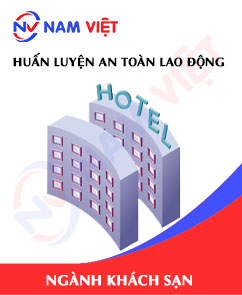
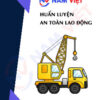
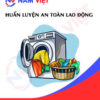



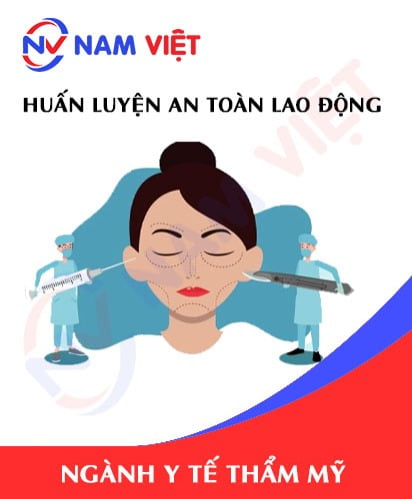
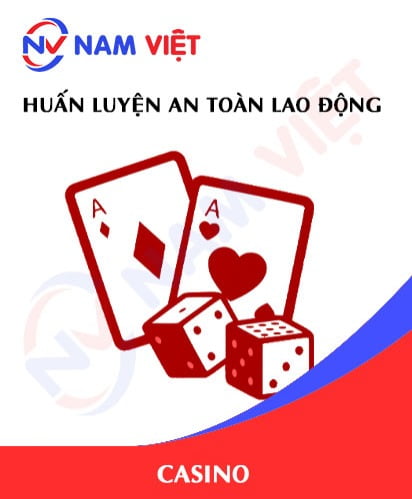
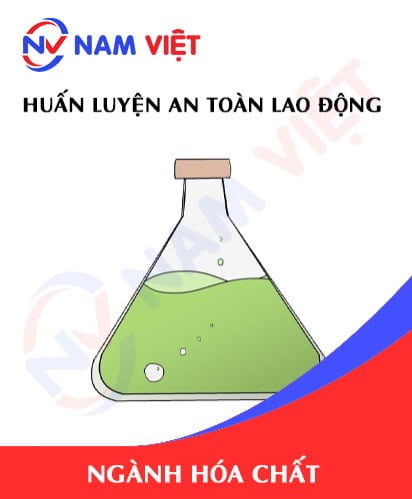
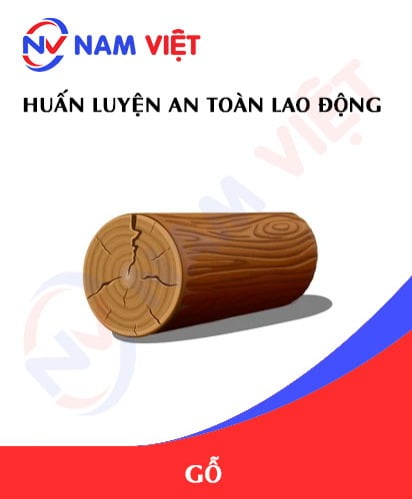
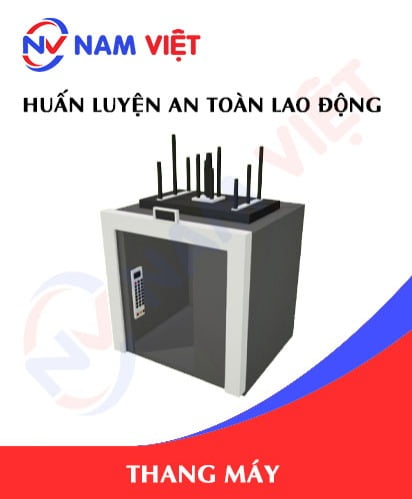
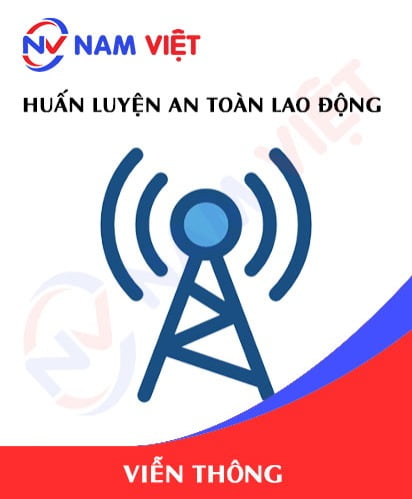
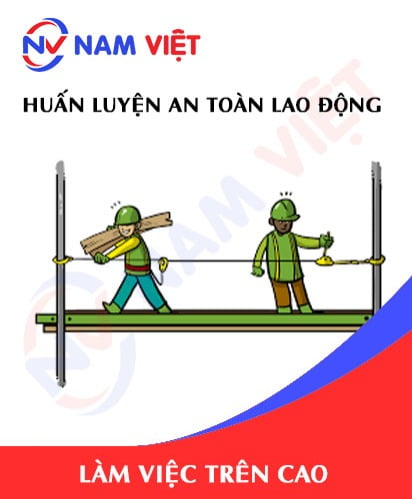
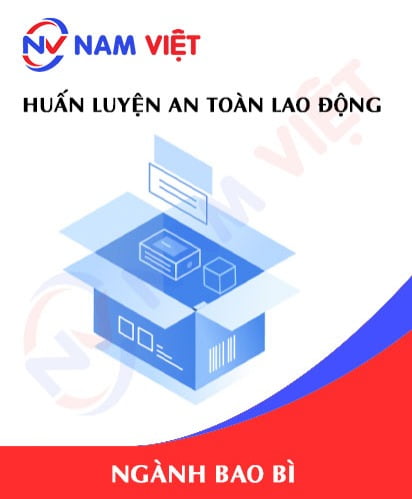
caotiensyhung.07081999
Dịch vụ huấn luyện an toàn lao động rất tốt nhé, giảng viên dạy rất sinh động dễ hiểu!